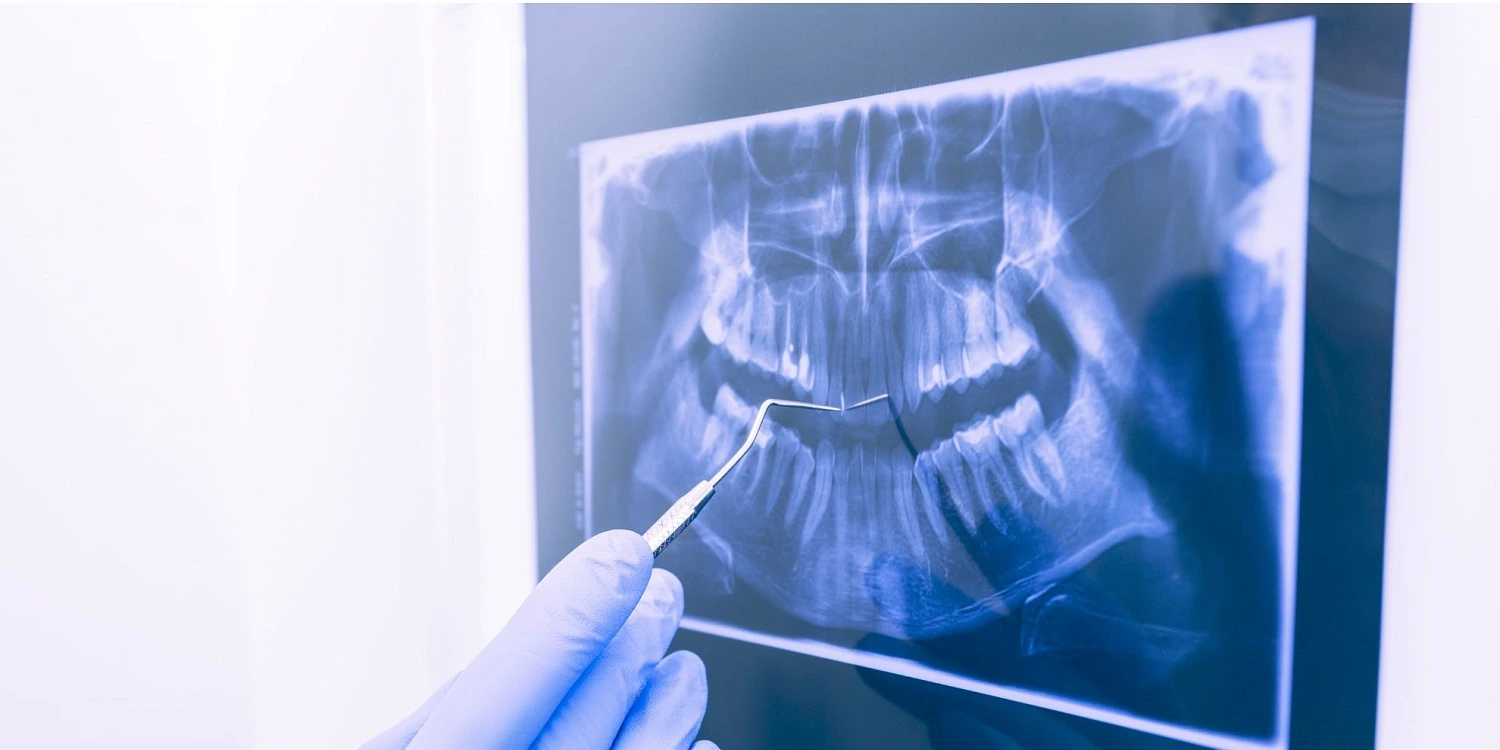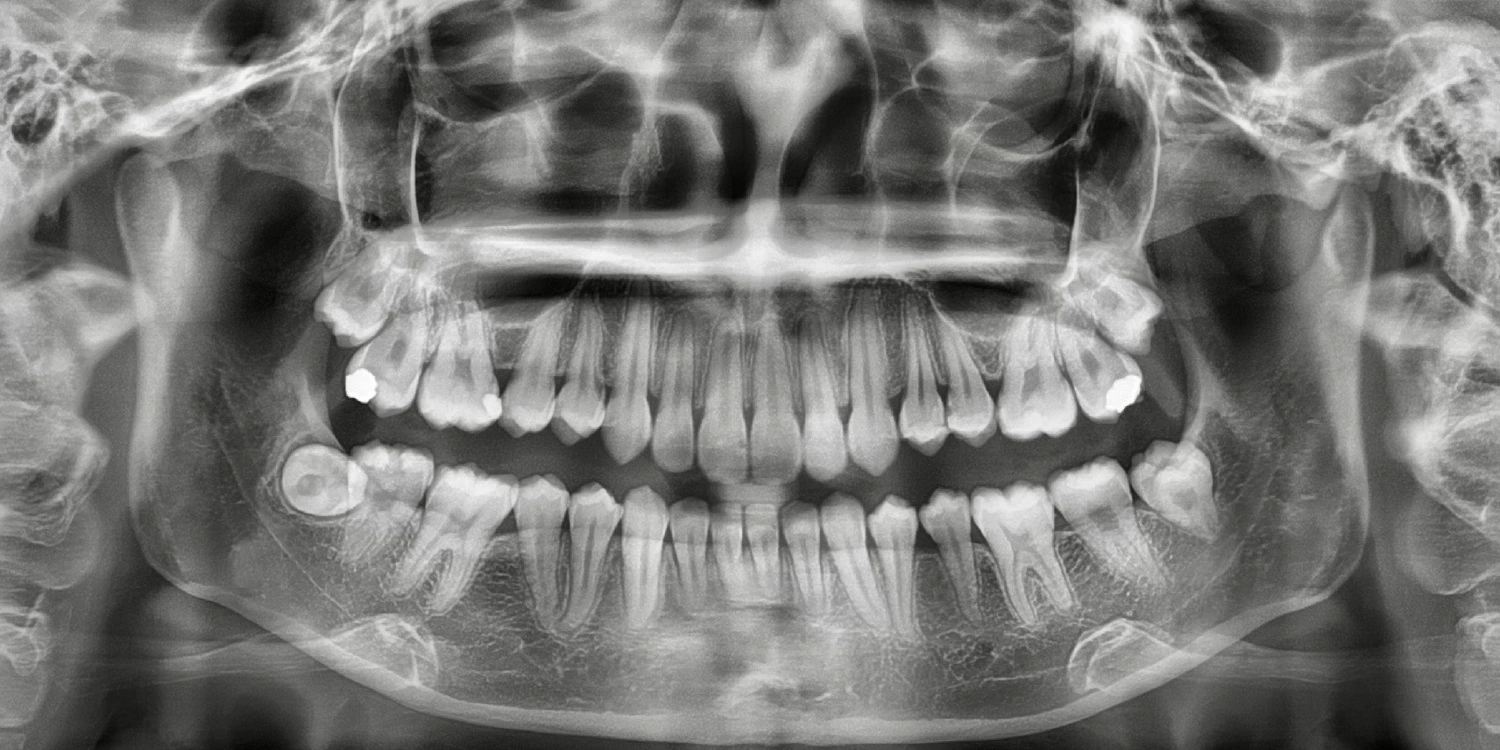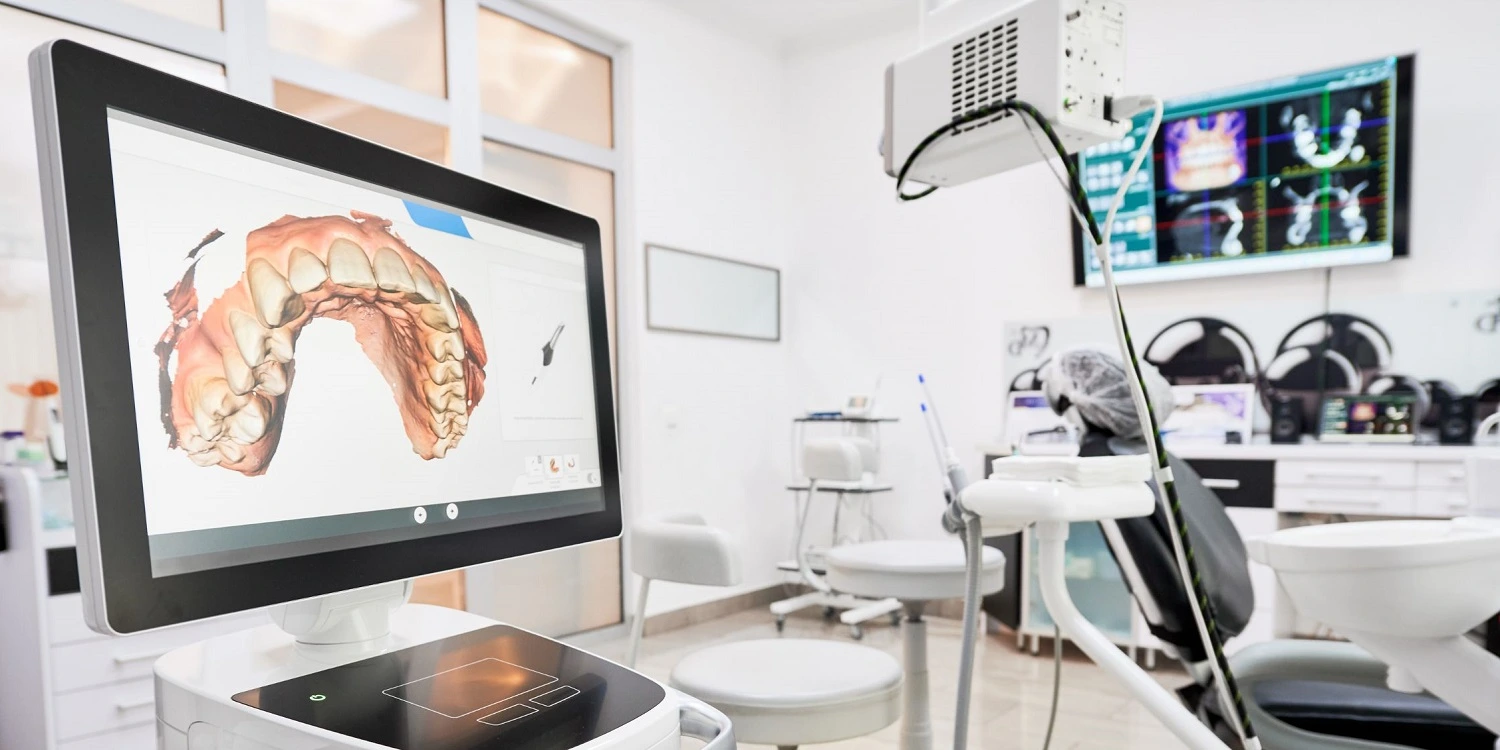Last Updated on: 20th May 2024, 01:39 pm
Modern dentistry benefits greatly from technological advances in the field of dental radiology. Dental radiographs play a critical role in the diagnosis and treatment of a wide variety of oral and maxillofacial problems. In this article, we will explore the differences between conventional dental X-rays and panoramic X-rays, discussing their advantages and applications. We will also address crucial aspects of radiographic safety and the necessary precautions to ensure the protection of the patient and dental health personnel.
Dental or periapical radiographs

Conventional dental radiographs, also known as intraoral or periapical radiographs, are a widely used dental imaging technique. These images offer a detailed view of individual teeth, allowing dental professionals to accurately assess the condition of each tooth and surrounding tissues.
Among the most common applications of dental x-rays are:
-
- Caries Detection: Dental X-rays are exceptionally useful for the early detection of dental cavities. They can reveal the presence of carious lesions even in areas not visible to the naked eye, allowing dentists to intervene before cavities become more extensive and painful.
- Detection of periodontal disease: Dental X-rays are also crucial for the monitoring and diagnosis of early signs of periodontal diseases, such as gingivitis and periodontitis. These images show bone loss and deterioration of supporting tissues, which helps plan appropriate treatment.
- Guide to root canal treatments: Dental X-rays are used to verify the length of root canals and ensure that endodontic treatment or alternative to root canal is carried out in the best conditions.
- Detection of fractures and sequelae due to trauma: Periapical radiographs provide detailed and accurate information about the state of the teeth and their supporting tissues, making it possible to observe fracture lines or displacement of the teeth (luxations).
Panoramic X-rays

Unlike conventional dental X-rays, panoramic X-rays are general images of the entire mouth and facial structures. This type of X-ray is less detailed compared to intraoral X-rays, but it offers a comprehensive view that can be beneficial in various situations:
-
- Tumor detection: The general view of the maxillofacial structures provided by tomography allows diagnosing the presence of cysts and tumors in the jaws.
- Evaluate anomalies in dental development: In children, panoramic X-rays show all the teeth: those already in the mouth and those that have not yet erupted. This examination allows us to observe that all of the teeth have formed, and to evaluate their position.
- Impacted Teeth: When teeth do not erupt properly, they are considered impacted. Panoramic radiographs are essential for identifying impacted teeth and determining the best approach for extraction or orthodontic treatment.
- Disorders of the Temporomandibular Joint (TMJ): Panoramic radiographs can be valuable in evaluating the temporomandibular joint (TMJ) and diagnosing disorders such as TMJ dysfunction. These images help to better understand the anatomy and possible abnormalities of this important joint, however, other tests are usually required for an accurate diagnosis, such as a CT scan. If you’re interested in how to cure TMJ, you can check out this article.
- Dental extractions: Panoramic X-rays provide information about the location of the teeth inside the mouth, the arrangement of their roots, and their relationship with neighboring structures, in order to properly plan their extraction.
Comparison of dental X-rays vs panoramic X-rays
The choice between conventional dental X-rays and panoramic X-rays largely depends on the purpose of the study and the needs of the patient. Here is a summary comparison of both techniques:
-
- Install: Intraoral dental X-rays provide a high degree of detail, ideal for evaluating individual teeth and specific structures. Panoramic X-rays give a general view but have less detail.
- Applications: Intraoral dental X-rays are essential for detecting cavities, periodontal diseases, and specific dental problems. Panoramic radiographs are more suitable for overall treatment planning and long-term follow-up.
- Radiation exposure and dose: Intraoral dental X-rays may involve increased radiation exposure, but the dose is generally low and safe. Panoramic radiographs offer less exposure.

Safety and Precautions
The safety of dental X-rays is a primary concern for both patients and dental health personnel. Below are some important precautions and considerations:
1. Radiographic Positioning Devices
To obtain high-quality images with minimal radiation dose, it is crucial that radiographic positioning devices are used correctly. These devices keep the X-ray tube and film in the proper position and reduce the need for repeats.
2. Lead Aprons and Thyroid Collars
Both the patient and dental staff should wear lead aprons to protect themselves from radiation. These aprons cover critical areas and reduce exposure to negligible levels. Thyroid collars are also essential to protect the thyroid gland from radiation.

3. Pregnancy
Pregnant women should inform their dentist about their condition before the x-ray. In most cases, extra precautions can be taken or non-urgent X-rays delayed until after pregnancy.
Conclusion
In modern dentistry, comprehensive diagnostic imaging using dental and panoramic radiographs is essential to define the treatment of a wide variety of oral and maxillofacial conditions. Dental X-rays offer a high level of detail and are ideal for detecting specific dental problems, such as cavities and periodontal diseases. On the other hand, panoramic radiographs provide a global view and are valuable for comprehensive treatment planning and long-term follow-up.
Ultimately, the choice between conventional dental radiographs and panoramic radiographs will depend on the clinical situation and the needs of the patient. Both techniques play a crucial role in modern dental care and contribute significantly to the accurate diagnosis and effective treatment of dental and maxillofacial problems.
Frequently Asked Questions
A panoramic x-ray covers the mouth from one side to the other, revealing the entire jaw, temporomandibular joint, maxilla, and sinuses. Although they are not as sharp and detailed as a full mouth X-ray (FMX) series, they have the ability to show the anatomy surrounding the teeth that are not visible on a full mouth series.
A single dental X-ray, one used to capture a single tooth, is equivalent to approximately one day’s exposure to natural radiation. In contrast, a two-dimensional panoramic image of the head and jaw carries a dose comparable to 2 to 3 days of natural environmental exposure. To put it in perspective, a conventional plain film chest X-ray involves about 10 days of natural radiation.
It is common to see light bleeding after rinsing the area, and this bleeding should stop within a few seconds. It is vitally important to ensure that the tip of the syringe enters the extraction cavity while flushing is in progress. If the tip is only on the surface of the gum tissue, food debris, and debris will not be adequately removed.
- Lower Radiation Exposure: Panoramic X-rays are one of the types of X-rays with the lowest radiation dose.
- Simplicity and Speed: Taking panoramic X-rays is a simple and fast procedure.
- Greater Patient Cooperation: Patients usually show greater cooperation and acceptance during this type of x-ray.
- Global Coverage: These X-rays cover the entire dental arch and associated structures, providing a complete view of the mouth and jaw. There is a distinction between panoramic X-rays and full-length X-rays.
Panoramic X-rays are preferable to bitewing X-rays in situations where the patient is experiencing extreme pain or when a sinus problem is suspected to be related to dental problems. In addition, panoramic radiographs are extremely versatile in dentistry and are used to:
- Evaluate patients with an extremely sensitive gag reflex.
- Follow the evolution of the temporomandibular joint (TMJ).
Contact Us
If you have any questions about irrigating wisdom tooth sockets or other dental topics, you can contact us at Channel Islands Family Dental as well as our page on Facebook. We look forward to your visit and we will make a timely diagnosis. Our dentists in Oxnard, Santa Paula, Ventura, Newbury Park, and Port Hueneme will be able to guide you toward the best treatment to take care of your health and give you back your best smile.
Bibliography
- White, S. C., Pharoah, M. J., (2018). Oral and Maxillofacial Radiology: Principles and Interpretation (6th ed.) Mosby.
- Langland, O. E., Langlais, R. P., & Preece, J. W. (2017). Principles of Dental Imaging (2nd ed.). Lippincott Williams & Wilkins.
- Tyndall, D. A., & Rathore, S. (2016). Cone-beam CT diagnostic applications: caries, periodontal bone assessment, and endodontic applications. Dental Clinics, 60(2), 343-358.
- White, S. C. (2014). Oral radiographic examinations: when, why, and how often. Dental Clinics, 58(1), 1-15.
- American Dental Association. (2021). Dental radiographic examinations: recommendations for patient selection and limiting radiation exposure. Journal of the American Dental Association, 152(3), 171-178.
- Ludlow, J. B., Davies-Ludlow, L. E., & Brooks, S. L. (2006). Dosimetry of two extraoral direct digital imaging devices: NewTom cone beam CT and Orthophos Plus DS panoramic unit. Dentomaxillofacial Radiology, 35(1), 37-43.
- Tyndall, D. A., & Kohltfarber, H. (2005). Application of cone beam volumetric tomography in endodontics. Australian Endodontic Journal, 31(1), 56-62.
- Horner, K. (1999). Radiographic technique in dentistry. British Dental Journal, 186(8), 392-396.
- Oenning, A. C., Jacobs, R., & Pauwels, R. (2012). Cone-beam CT in paediatric dentistry: DIMITRA project position statement. Pediatric Radiology, 42(10), 1282-1284.
- Hintze, H., Wenzel, A., & Frydenberg, M. (2002). Incidental findings in the maxillofacial region: a 3-year cross-sectional study. Acta Odontologica Scandinavica, 60(6), 322-329.



